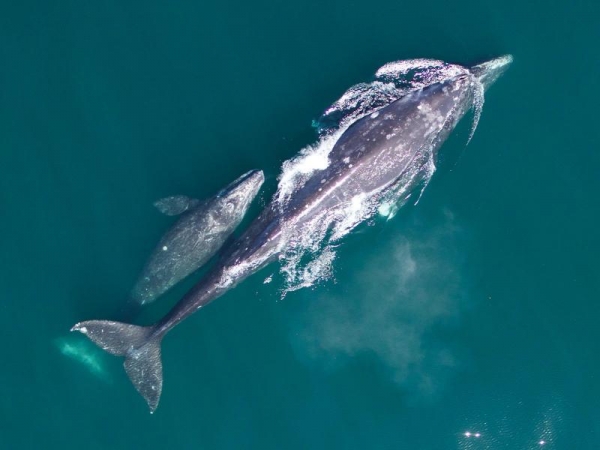Almost twice as many gray whale calves swam north with their mothers to their Arctic feeding grounds this spring compared to last year, according to a new count completed by NOAA Fisheries’ Southwest Fisheries Science Center.
The results suggest that the eastern North Pacific population of gray whales that migrate along the West Coast may be stabilizing after several years of declines. NOAA Fisheries declared an Unusual Mortality Event in 2019 due to an increase in strandings that nearly cut their numbers in half. The increase in the estimated number of calves migrating north adds to other positive signs for the population. We have also seen higher numbers of mother-calf pairs in Mexican wintering lagoons and fewer whales stranding and dying on their migration north.
“This is a positive data point, but it is only a small improvement that we need to keep monitoring,” said Aimée Lang, who led the spring calf count. Researchers at Piedras Blancas on the central California coast estimated that 412 female gray whales swam north with calves this year. Gray whales undertake one of the longest migrations of any species.
Read more at: NOAA
Gray whale mother and her calf on their northbound migration. (Photo Credit: NOAA)


